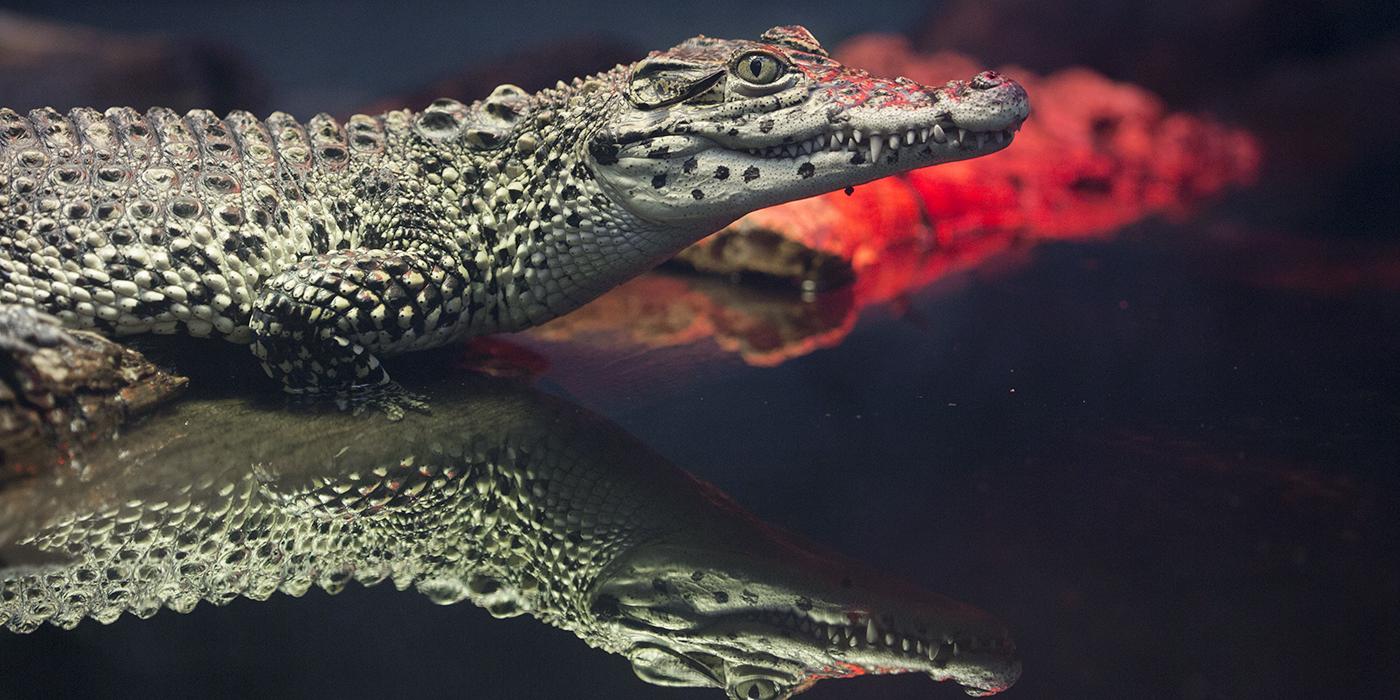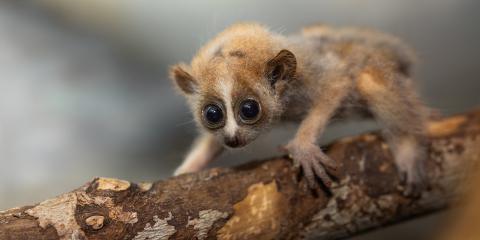Cuban crocodiles are one of the most endangered species of crocodile and are found only in Cuba. These small crocodiles are strong swimmers. They walk and leap with ease and are equally at home in water and on land.
Physical Description
Cuban crocodiles have short, broad heads with a bony ridge behind the eyes. They are green and olive black with yellow speckles and darker coloration toward the top of their bodies. Their bellies are pale, and their tails have black blotches or bands.
Large osteoderms, or bony plates, form the dorsal shield along the Cuban crocodile's back and extend onto the back of its neck. The scales on its legs are large, and those on its back legs are heavily keeled, meaning the scales have a raised ridge down the center.
These crocodiles are strong swimmers and are adept at walking and leaping, which makes them equally at home in water or on land. They cannot generate heat metabolically, so they soak up heat from the sun or warm water to control their temperature. They will often do this in the morning when they are cold and groggy, or after a meal to help raise their metabolism.
Size
Adult Cuban crocodiles can generally grow up to 10.5 feet (3.5 meters) long, with males growing larger than females. Bigger individuals have been found in the past but are now rare.
Native Habitat
These crocodiles have the smallest range of any crocodile, encompassing an area less than 200 square miles (500 square kilometers). They are found only in Cuba's Zapata Swamp in the southwest and Lanier Swamp on Isla de Juventud. Their historical range also included the Cayman and Bahaman islands.
Cuban crocodiles prefer freshwater marshes and swamps similar to those of the Everglades. They rarely swim in saltwater.
Lifespan
This species lives for about 50 to 75 years.
Food/Eating Habits
Juveniles tend to feed on invertebrates and small fish, while adults primarily eat fish, turtles and small mammals. They can also leap from the water, using powerful tail thrusts below the surface, to catch birds and arboreal mammals from overhanging tree branches. At the Zoo, the crocodiles eat croc pellets, rats, rabbits and occasionally fish.
Social Structure
In groups, Cuban crocodiles form a dominance hierarchy based on gender, size and temperament.
Reproduction and Development
The Cuban crocodile breeding season typically begins in May and lasts three to four months. The Zoo's crocodiles begin to breed from mid-to-late October through April, just before females start nesting. Cuban crocodiles construct mound nests and lay an average of 30 to 40 eggs, though the number of eggs depends upon the size and age of the mother.
They produce such a large number of eggs to compensate for the fact that many hatchlings do not survive to adulthood. This is primarily due to the predation of both eggs and hatchling crocodiles by various reptiles and birds. Cannibalism of young by more mature Cuban crocodiles has also been reported.
The eggs range widely in size but, on average, are 2.5 inches (6 centimeters) long. In the wild, the eggs hatch about 2 1/2 months after they are laid. The temperature of the nest determines the sex of the hatchlings. Between 89.6 and 90.5 degrees Fahrenheit (32 to 32.5 Celsius) produces males.
Conservation Efforts
The Cuban crocodile is one of the most threatened New World crocodilian species, primarily because it has such a small and restricted distribution. Their main threat is humans, who have hunted the crocodile extensively and have largely encroached upon their habitats.
There are currently more than 600 Cuban crocodiles in the Lanier Swamp competing for space and food resources with at least 40,000 spectacled caiman. Likewise, the American crocodile has made incursions into the Zapata Swamp through a series of canals constructed in the 19th century.
There, American crocodiles and Cuban crocodiles are interbreeding, producing hybrids and leading to the loss of the Cuban crocodile's genetic integrity. It is thought that there are around 3,000 purebred Cuban crocodiles in the wild.
Information on the ecology and natural history of the Cuban crocodile is still not widely known. Work needs to be done to increase and protect the remaining wild population. Cuban crocodiles are well represented in human care in the U.S., where most individuals are part of the Species Survival Plan population.
Farms were established in the late 1950s and 1960s for skin and meat production, and now a relatively large number of animals are produced annually to satisfy demand. One farm has been given CITES approval to start international trade in skins.
Help this Species
- Be a smart consumer! Avoid animal-skin products, even those marked “faux,” to ensure you’re not contributing to the illegal hunting of this species.
- Share the story of this animal with others. Simply raising awareness about this species can contribute to its overall protection.





